Fearless Genius: The Digital Revolution In Silicon Valley 1985-2000 In Photographs By Doug Menuez
Susan Kare Is Part of Your Daily Life. Sonoma, California, 1987
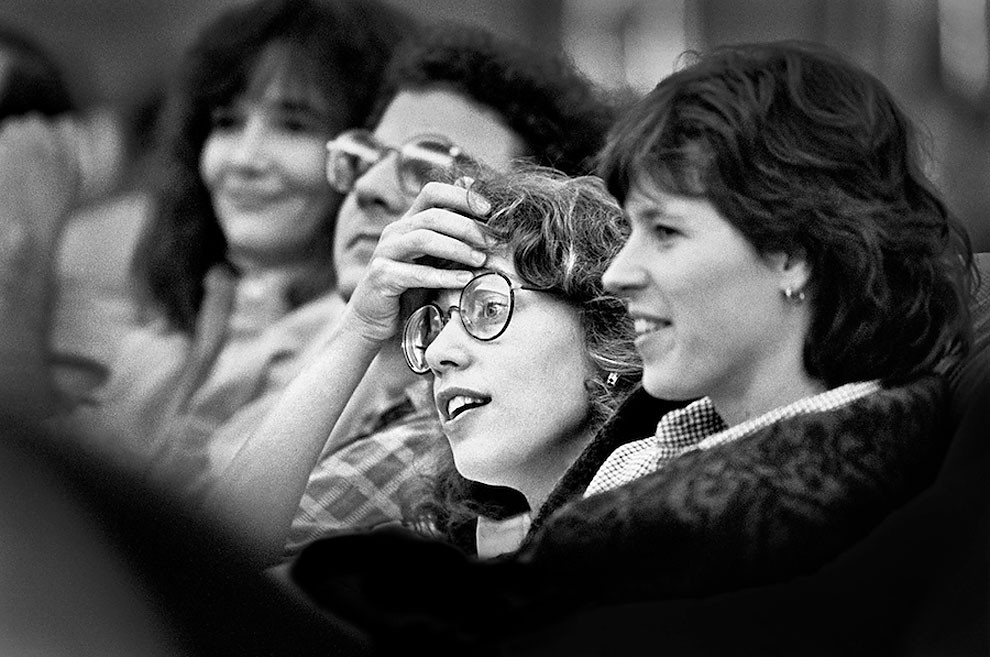
Doug Menuez is the photographer at the origin of the documentary-book Fearless Genius: The Digital Revolution in Silicon Valley 1985-2000, published recently at Atria Books. From 1985 to 2000, Steve Jobs and many other creators have invited Menuez in the place where the Digital Revolution operated : the Silicon Valley. During all these years, this photographer captured the portraits of the biggest innovators of our time, in moments of crisis, doubts and deep joy.
It’s not a stretch to say that Susan Kare’s playful icons and user interface design have impacted the daily lives of hundreds of millions of people around the world. Susan was part of the original Mac team and designed the original Mac icons and much of the user interface. Leaving Apple with Steve after his ouster, she became a cofounder and creative director at NeXT Computer, where she oversaw the creation of its icons and logo, working with the legendary Paul Rand. Later she designed or redesigned icons for many other computer operating systems, including Windows and IBM’s OS/2. Here she’s listening to Steve at an off-site meeting with her colleague Kim Jenkins (right), as he discusses the unfinished tasks facing the company. Kim, a key member of the marketing team, came to NeXT from Microsoft, where the education division she started was profitable beyond anyone’s expectations, giving real competition to Apple, which had previously dominated the education market.
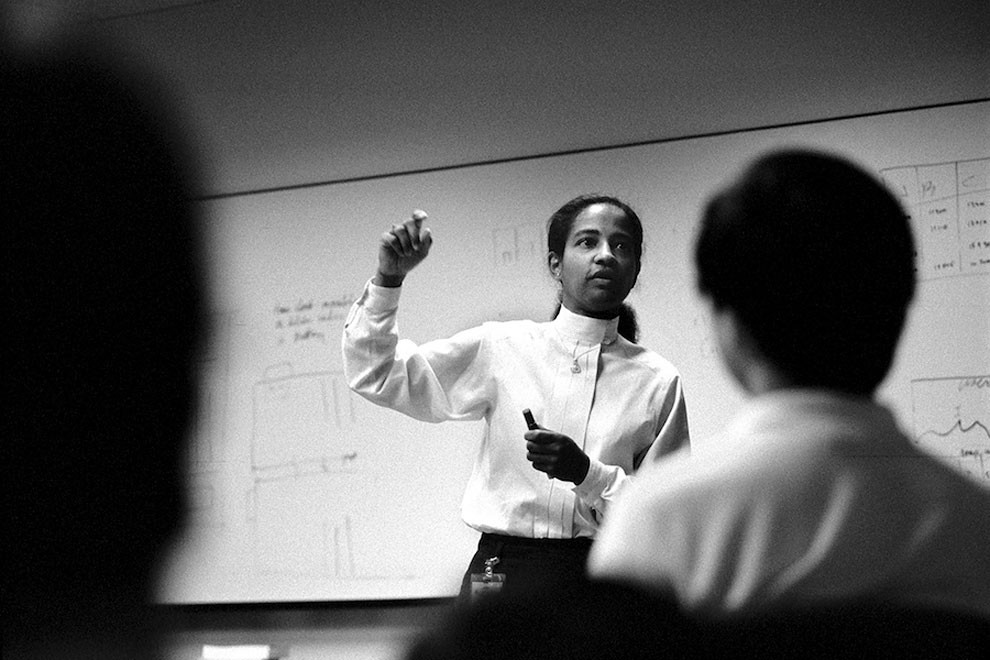
Steve Jobs Pretending to Be Human. Menlo Park, California, 1987.

Steve was not the kind of guy who ever seemed to relax. He was usually focused like a laser on the task at hand. So it was surprising to see Steve kicking this beach ball around at a company picnic. He seemed to be having a good time, but it felt more like a performance designed to encourage the team to relax. He knew well from previous experience that his team needed breaks in order to sustain the forced march that would culminate in shipping the product.
Geek Sex. Mountain View, California, 1991.
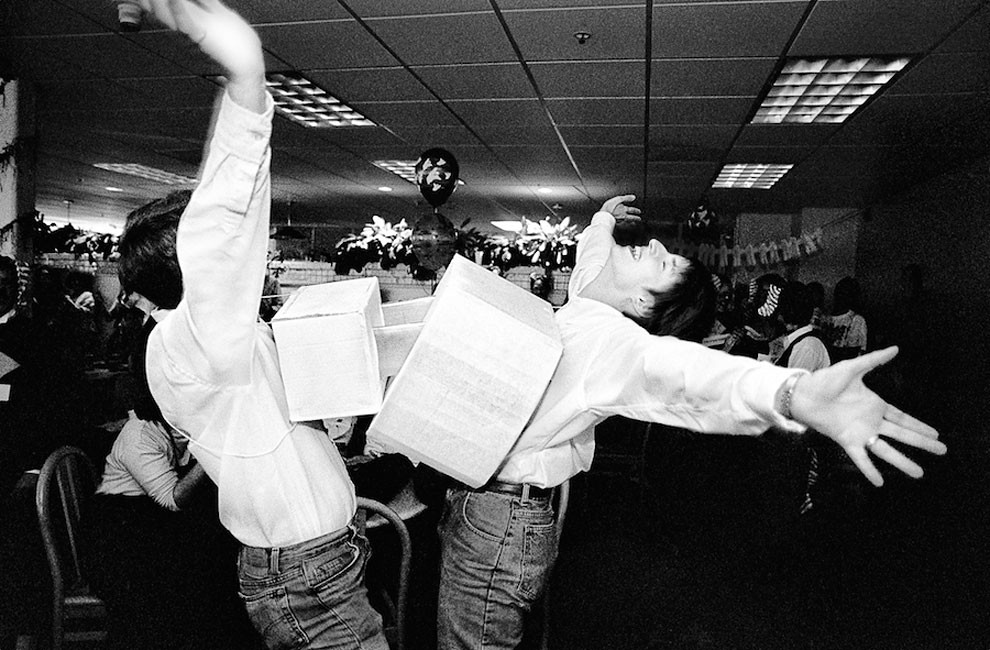
Real-life boyfriend and girlfriend act out a rudimentary electrical metaphor at an Adobe Halloween party. Technology workers were notoriously socially inept and often shy, especially male engineers. Fantasy games and role playing were popular, and any opportunity to dress in costumes was welcomed. This couple repeated the ritual all over the company to the delight of fellow workers.
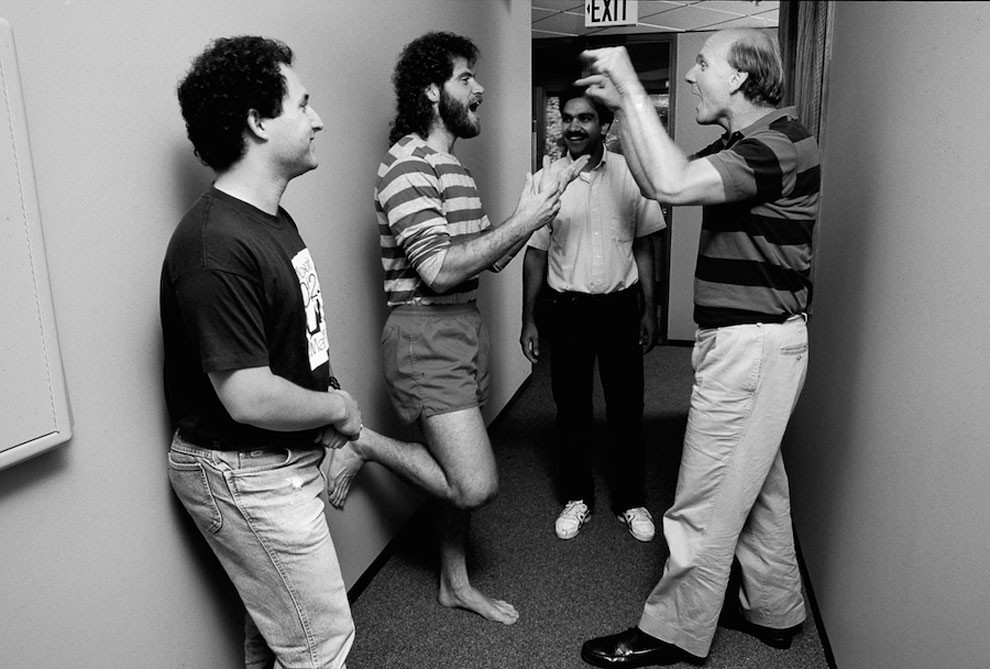
The Day Ross Perot Gave Steve Jobs $20 Million. Fremont, California, 1986.

Steve was a consummate showman who understood the power of a compelling setting. This was never more apparent than at this incongruously formal lunch he hosted for Ross Perot and the NeXT board of directors in the middle of the abandoned warehouse he planned to turn into the NeXT factory. He told Perot that they were building the most advanced robotic assembly line in the world and that “no human hands” would be assembling hardware. He predicted that NeXT would be the last billion dollar a year company in Silicon Valley and that they would ship ten thousand computers a month. Perot, who was then championing a movement to reform education in the United States, was blown away by the presentation and invested $20 million, becoming a key board member and giving NeXT a crucial lifeline.
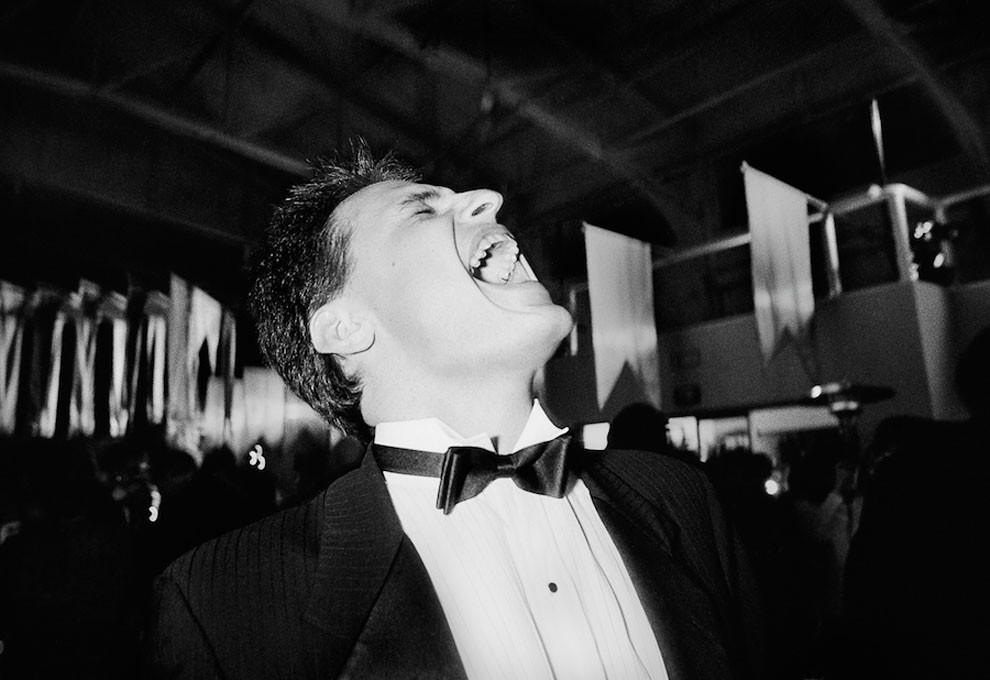
The Newton War Room at Apple Computer. Cupertino, California, 1993.
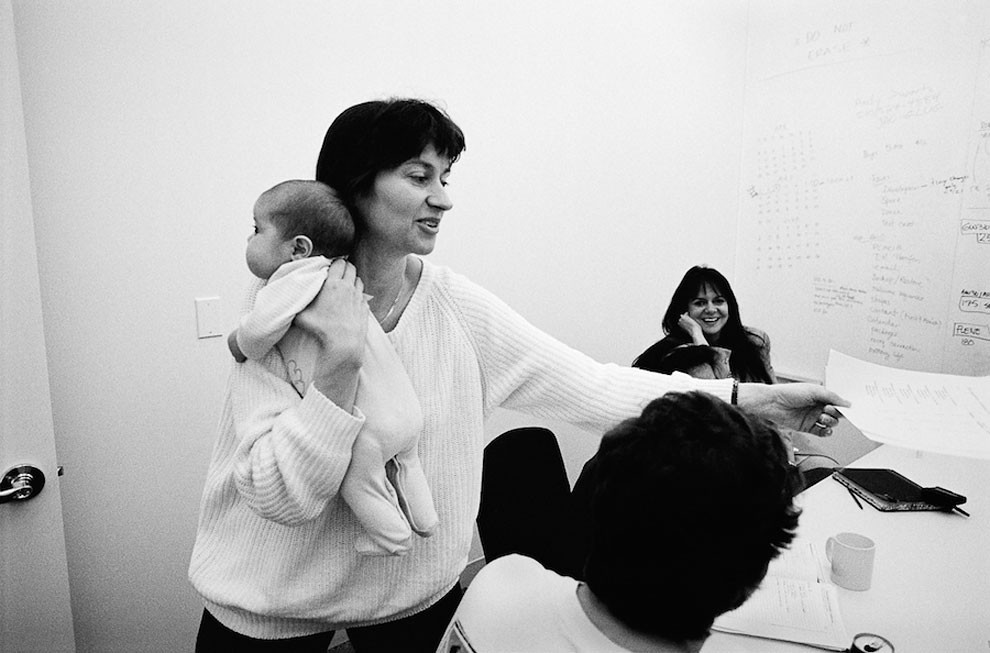
Apple programmer Sarah Clark kept her newborn baby with her at work, almost never leaving the building for two years as the team rushed to finish the software. She pulled curtains over her office so colleagues knew when it was naptime or if she was breast feeding. Her dedication was typical of Apple employees, and management was generally grateful. Flexible hours and other worker friendly modifications were adopted, and John Sculley showed leadership by appointing women to positions of power, unusual in Silicon Valley at that time. What’s not often considered is that whoever writes the code determines how the machine will behave and interact with the user. The implications of this are not often discussed. What if someone other than a 20-something white male geek wrote the code? A different worldview would likely change the priorities of the code writer, and that would likely change the nature of the technology that is so profoundly shaping our behavior and culture.
Bill Gates Says No One Should Ever Pay More Than $50 for a Photograph. Laguna Niguel, California, 1992.
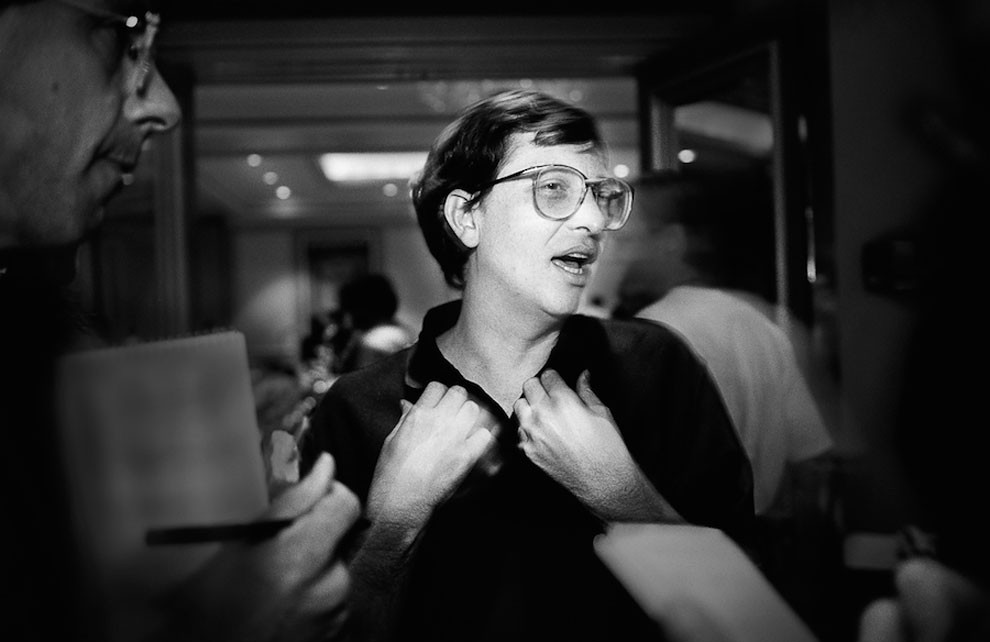
Microsoft CEO Bill Gates discusses cheap content for the masses and debates with reporters about the long-delayed vaporware upgrade to Windows at the Agenda ’92 Conference, hosted by the elegantly acerbic Stuart Alsop. Alsop showed Gates no mercy during an interview onstage, grilling him on why Windows was so late. Later that year, at the third influential TED conference, Gates was onstage making a presentation about digital content and the cost of photography, saying, “No one should ever pay more than fifty bucks for a photograph.” As Gates explained, he was completing construction of his high tech house in Seattle, whose interiors would feature screens with continuously changing displays of images. Licensing images on the scale he envisioned would be expensive, so he began to think about how to own or control vast archives of images. This led to the idea of forming a stock photography business originally called Continuum, tasked with developing large image libraries for online distribution. Later, not long after initial bad press from the photography trade publications the name was changed to Corbis.

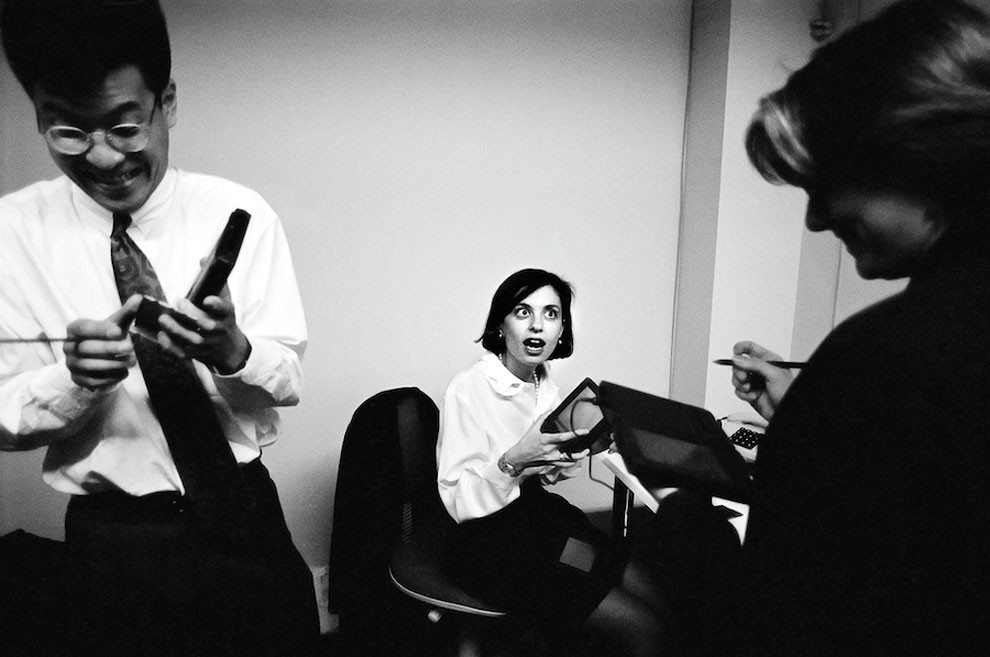
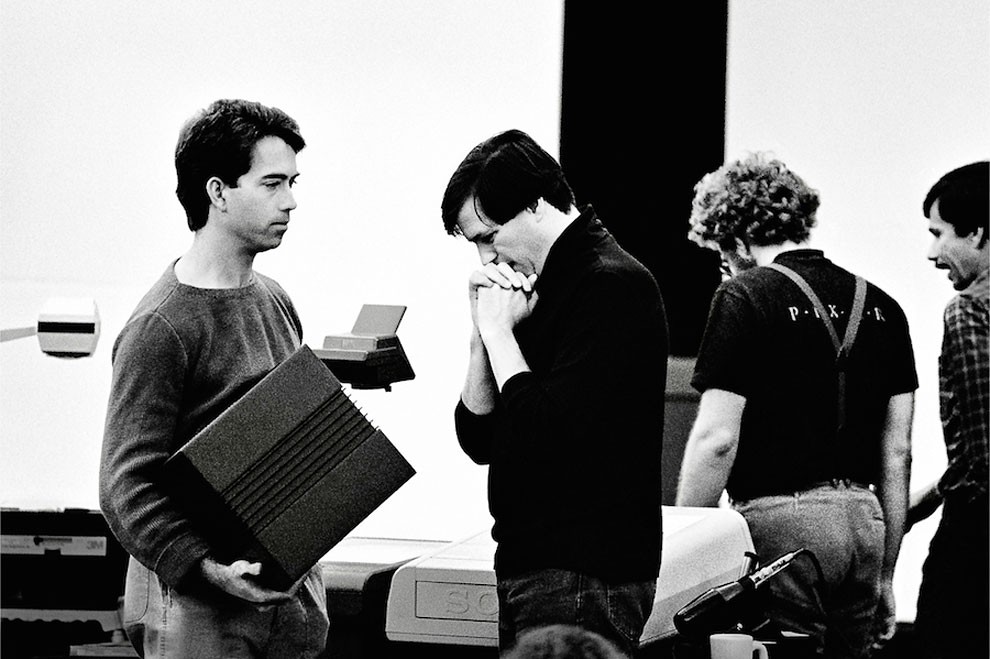
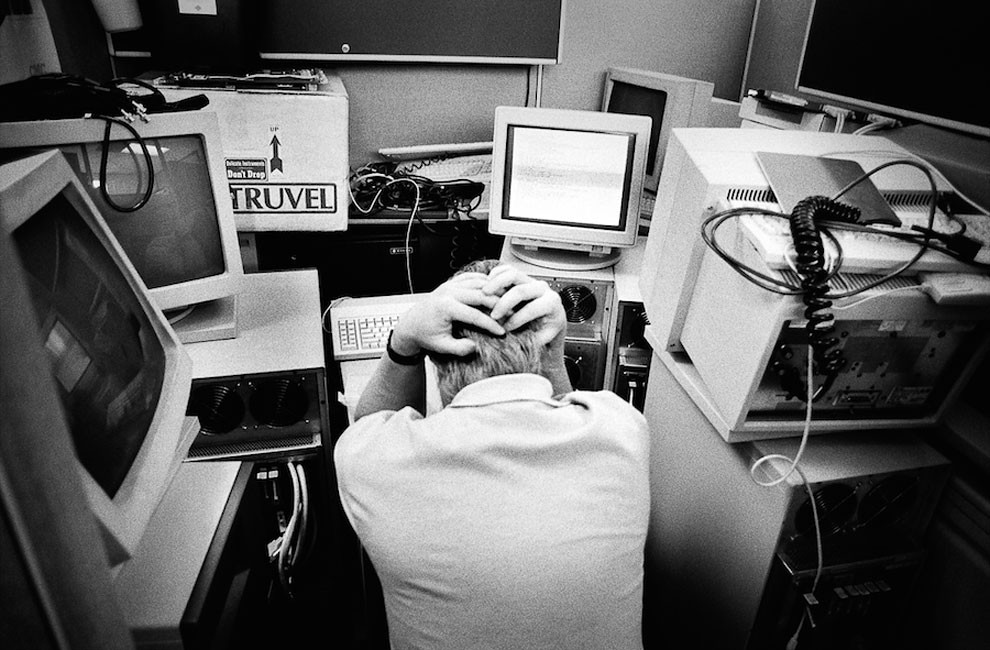
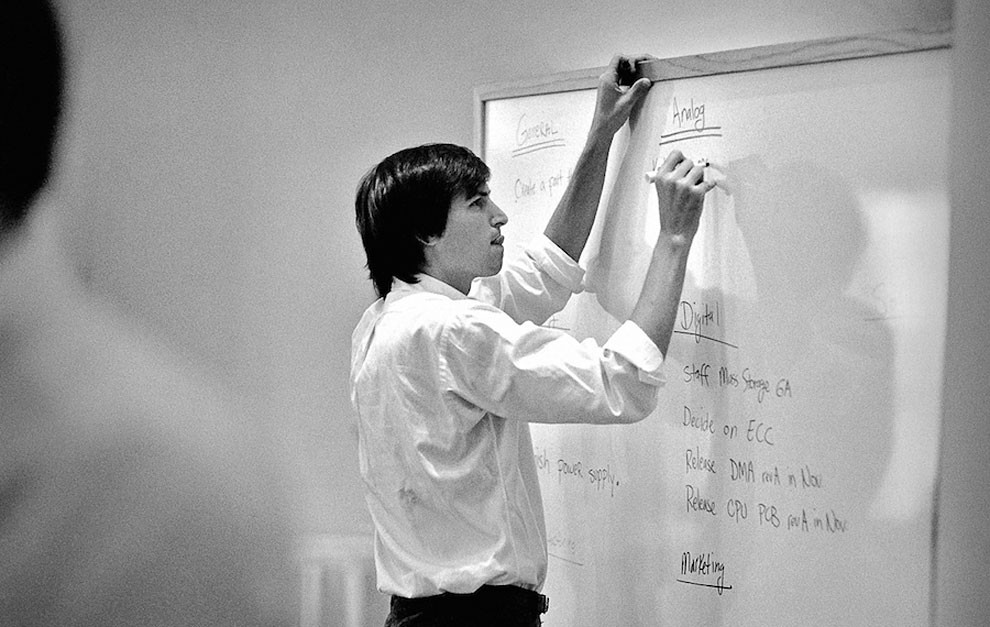


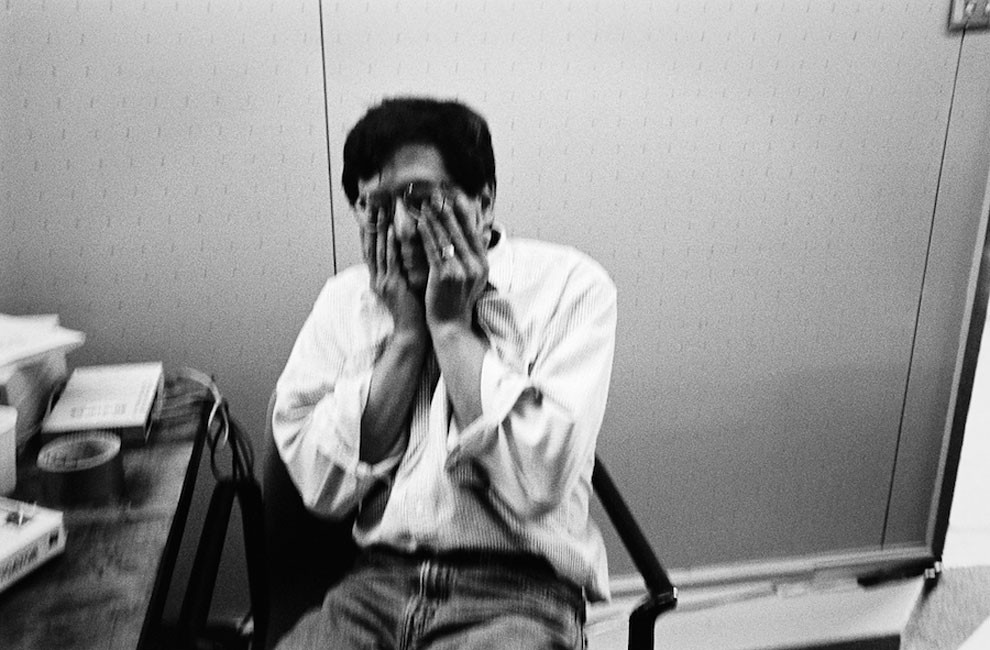
Exercise Break at Intel Fab 11X. Rio Rancho, New Mexico, 1998.
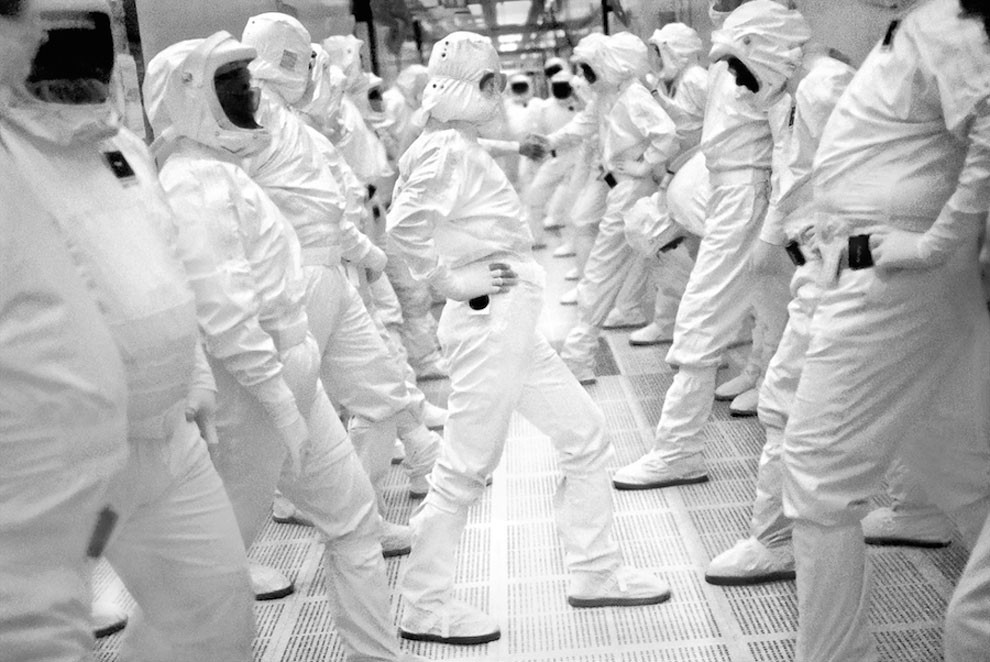
Workers inside Intel’s largest chip fabrication plant exercise and stretch as part of their break time. The plant is a giant, sterile clean room, so protective “bunny suits” must be worn through-out the facility to prevent contamination from skin and hair. These workers produce five chips a second, twenty-four hours a day. Many of them are from the nearby Pueblo tribe and maintain their traditions when not working with new technology. After work, many tend their corn and bean fields with their families before dinner.
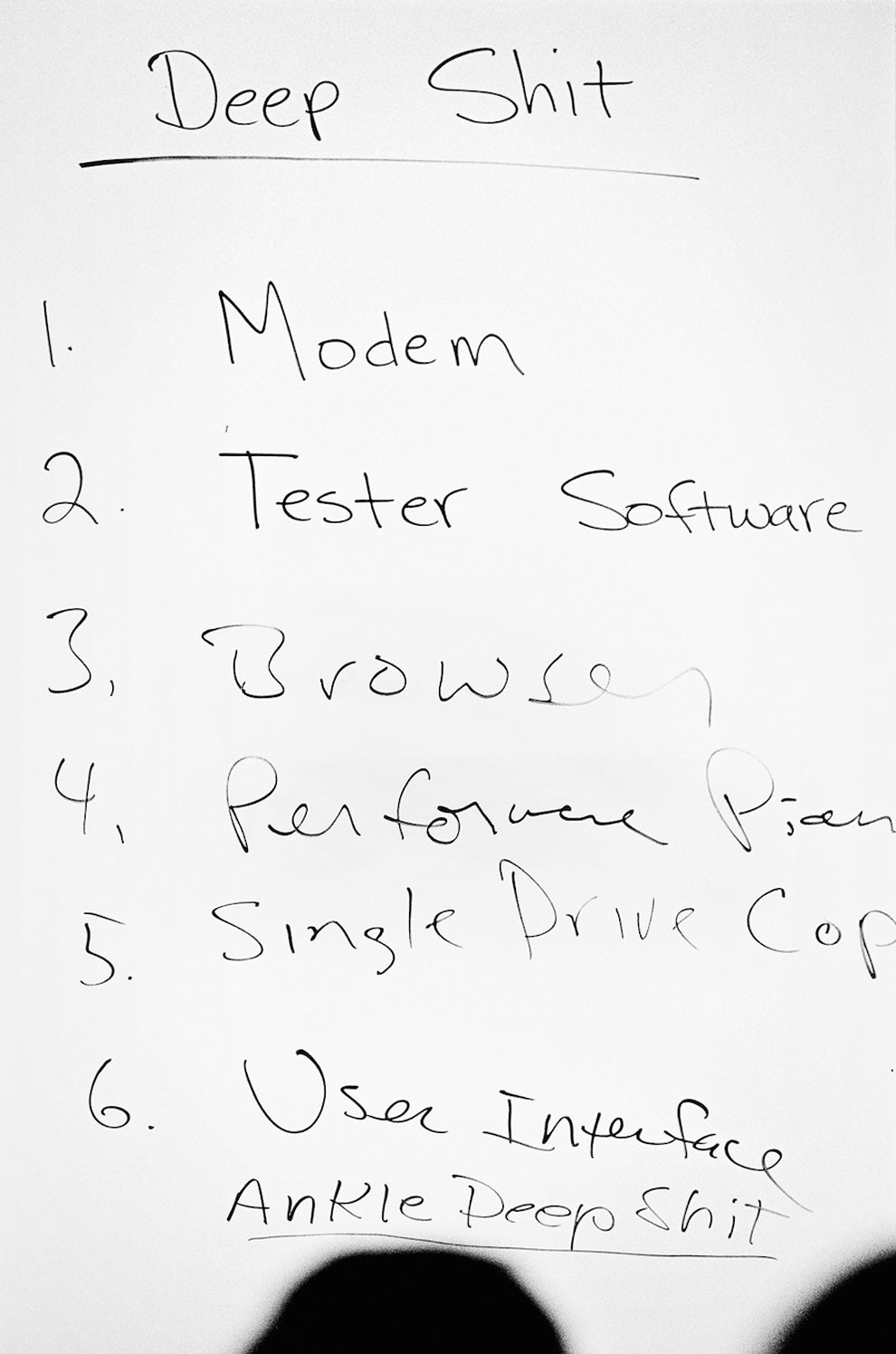
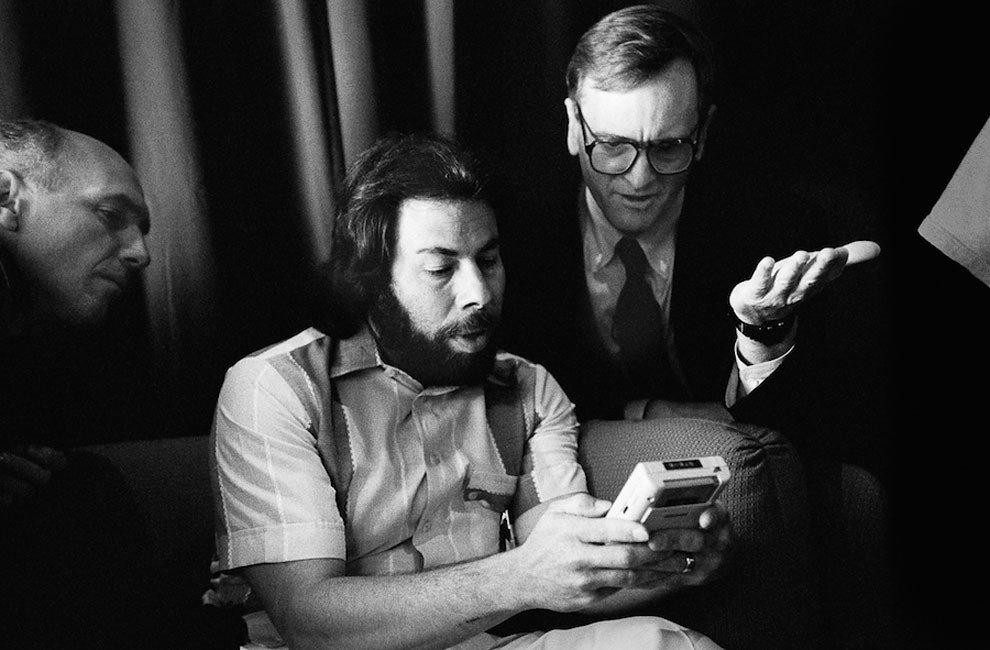
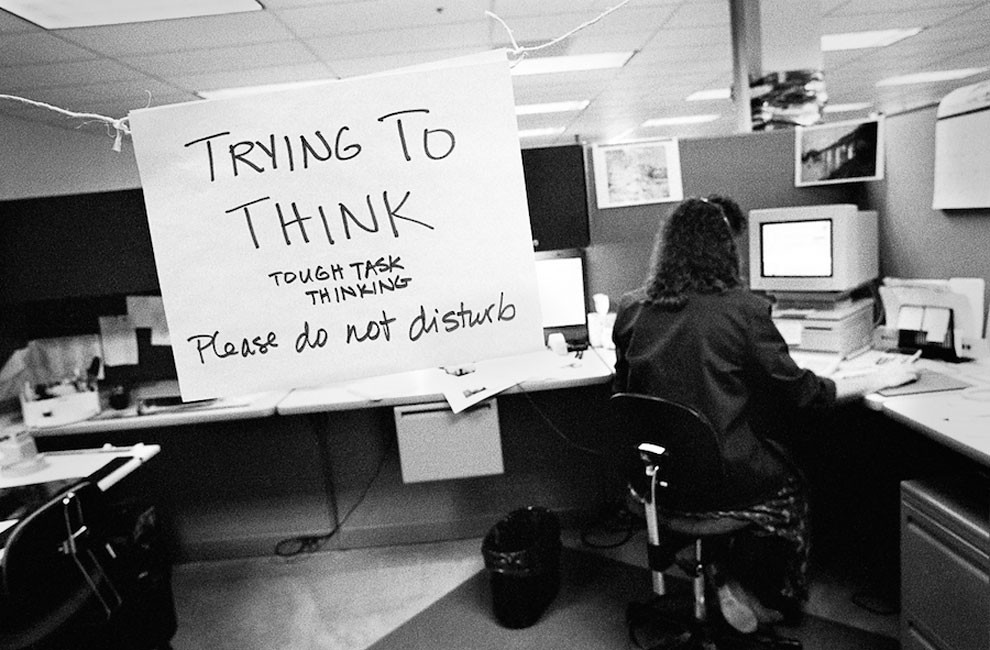
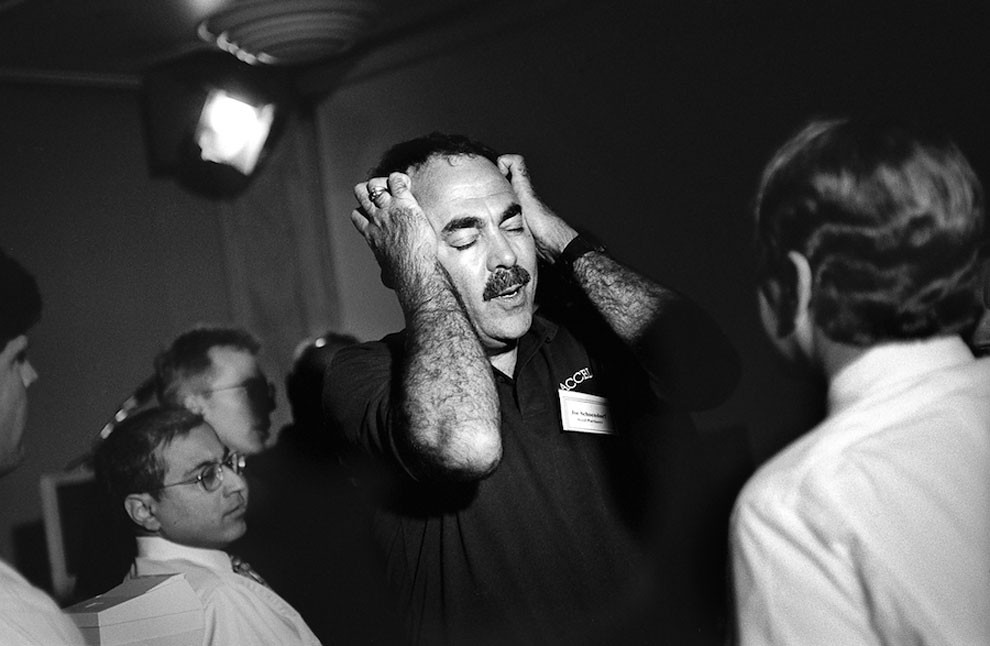
Steve Jobs Returning from a Visit to the New Factory. Fremont, California, 1987.
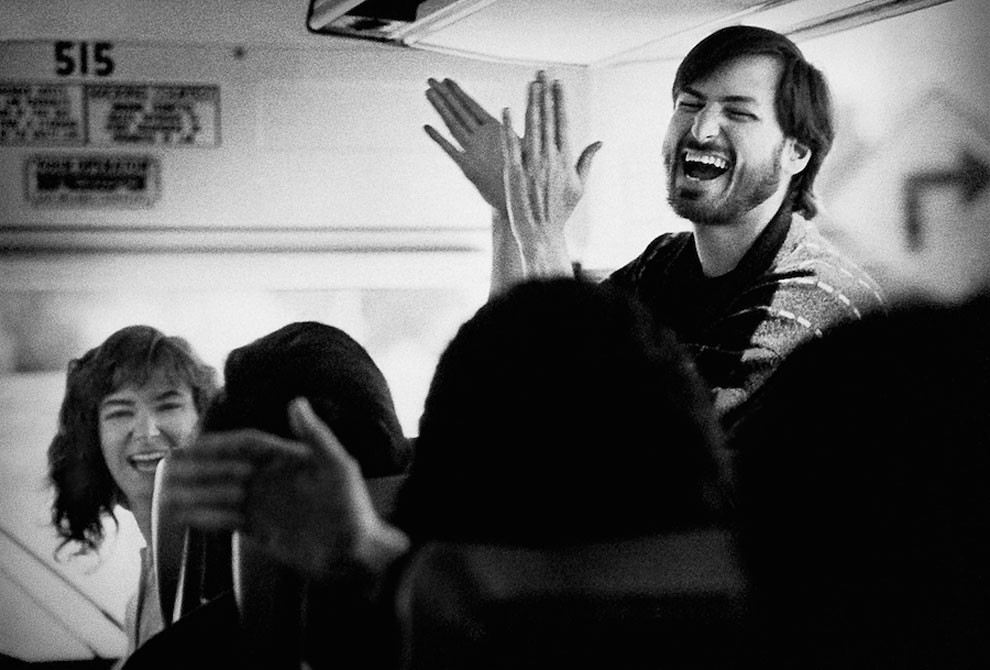
Although Steve could be extremely rude, critical, and occasionally even vindictive, he also was incredibly joyful, with an infectious grin and energy that was irresistible. In the early days at NeXT he would often come bounding in, hungry to get to work. Still, there were not too many unrestrained moments of hilarity such as this one, when Steve was riding back from a visit to the newly chosen factory site with the company employees in an old, rented yellow school bus.
Steve Jobs Explaining Ten – Year Technology Development Cycles. Sonoma, California, 1986.

Steve giving a history lesson about how technology evolves in ten year wave cycles to his new NeXT team at an off-site meeting. Every few months, Steve and the fledgling company’s employees would travel to a retreat in the country with their families to grapple with myriad technical issues. There he would regularly hold talks to explain his vision for the company and to encourage his brilliant cofounders and employees to participate fully in its realization. Steve planned to ride the next wave by putting the power of a refrigerator-size mainframe computer into a one foot cube at a price affordable to universities, thus “transforming education.” When I asked him what he meant by this, he said he wanted “some kid at Stanford to be able to cure cancer in his dorm room.” Because he absolutely believed this was possible, his whole team did. Behind this noble goal, Steve was also on a quest for redemption and revenge after being forced out at Apple in a humiliating boardroom coup after alienating key board members and his handpicked CEO, John Sculley. Most industry pundits believed NeXT would be a huge and rapid success, as did Steve. Instead, it was the start of a decade of difficult, often bitter struggle.
Preparing to Release Photoshop. Mountain View, California, 1988.
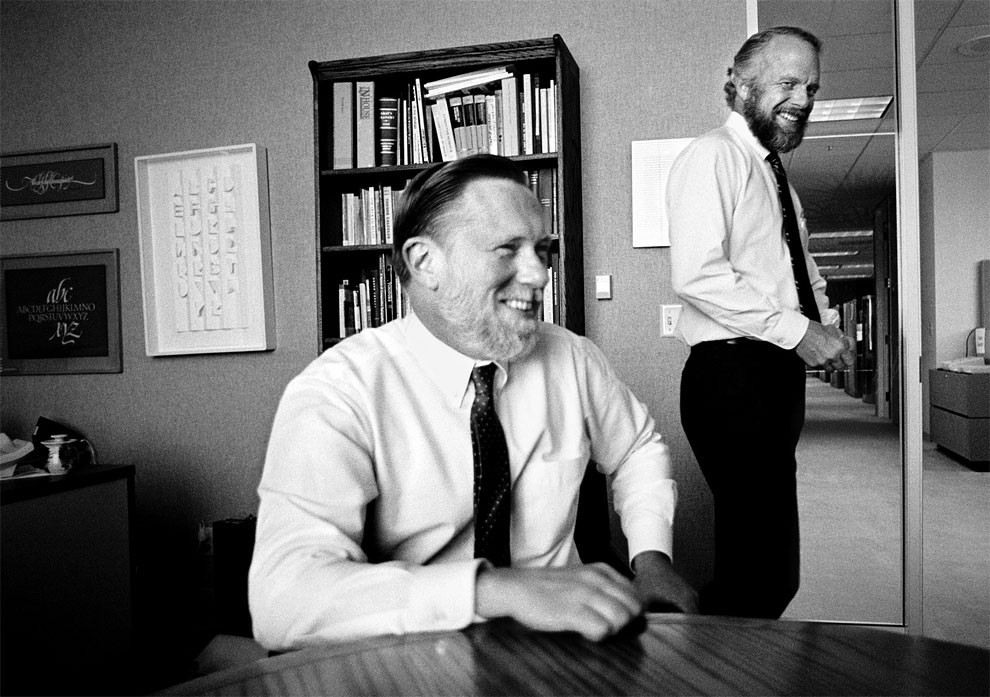
John Warnock and Chuck Geschke (seated at left) confidently ready the launch of Photoshop, a landmark program that would utterly transform photography and the graphic arts. This followed their first breakthrough software called PostScript, completed after twenty thousand man hours of coding, which allowed personal computers to talk to printers. This seemingly small function was incredibly difficult to achieve and represented the biggest advance in printing since Gutenberg invented movable type in 1436. The duo left Xerox PARC (Palo Alto Research Center) after their brilliant ideas were ignored and founded Adobe in 1982 with $2 million. They read exactly one business book prior to starting Adobe and intended to sell a personal desktop computer with a printer. They did not initially envision revolutionizing the desktop publishing industry with fonts or design software. A few months after they opened for business, Steve Jobs showed up (1982, riding high in his first stint as CEO at Apple) and demanded to buy the company. His then in development Macintosh was going to ship with a laser printer, but his team could not write the requisite software. Steve pressed them to sell and come work for him. As Chuck told the story, they refused, and Steve responded, “You guys are idiots!” They called their investors, who urged them to work something out with Steve. They agreed to sell him shares worth 19 percent of the company, for which Steve paid a five times multiple of their company’s valuation at the time, plus a five year license fee for PostScript, in advance. This made Adobe the first company in the history of Silicon Valley to become profitable in its first year.
The Painter David Hockney Rests during the First Photoshop Invitational. Mountain View, California, 1990.
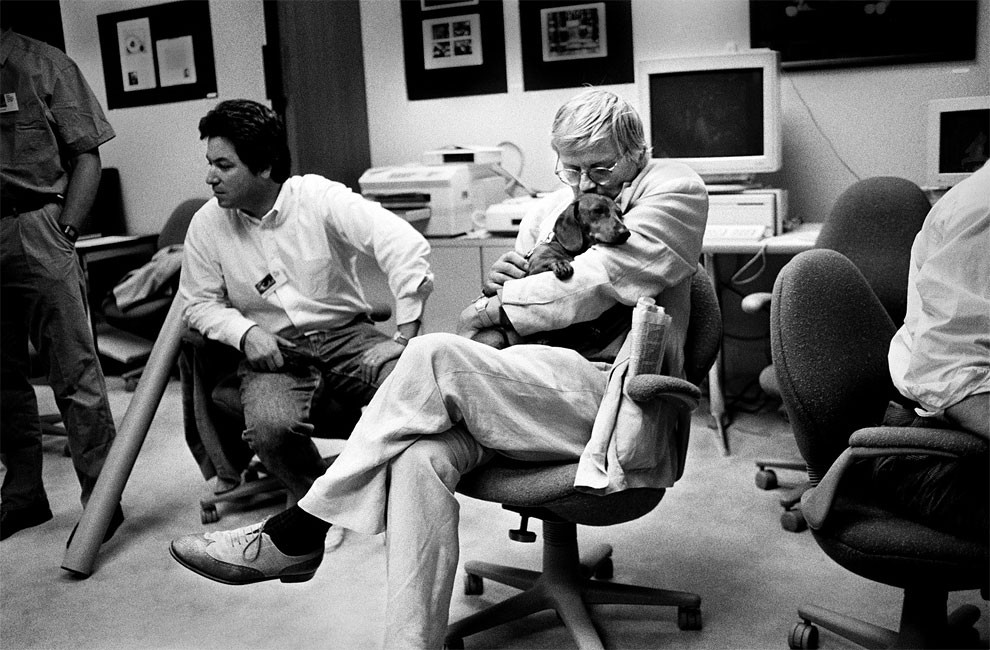
As digital technology grew more powerful, Silicon Valley became an unexpected crossroads of culture. Artists arrived from all over the world, eager to experiment and hang out at happenings such as the TED conference, creating a freeway and office park version of what Paris in the twenties must have felt like. Producer Quincy Jones and musicians Peter Gabriel and Herbie Hancock were early adopters. Graham Nash was so taken he started his own fine art digital printing business. Tom Wolfe had been out to write about Bob Noyce, the coinventor of the integrated circuit, and lots of writers followed, including Steve Jobs’s half sister Mona Simpson. George Lucas was a pioneer in digital film, as was Francis Ford Coppola. The cultural ground was shifting, with the avantgarde gathering to push new digital ideas into the zeitgeist. Here, painter David Hockney, holding one of his beloved dachshunds, attends Russell Brown’s first Adobe Photoshop Invitational, where he learned how to use the first release version of Photoshop, happily smoking in the computer room and playing with his dogs on breaks.
Remains of an All-‐Night Programming Session. Redwood City, California, 1997.
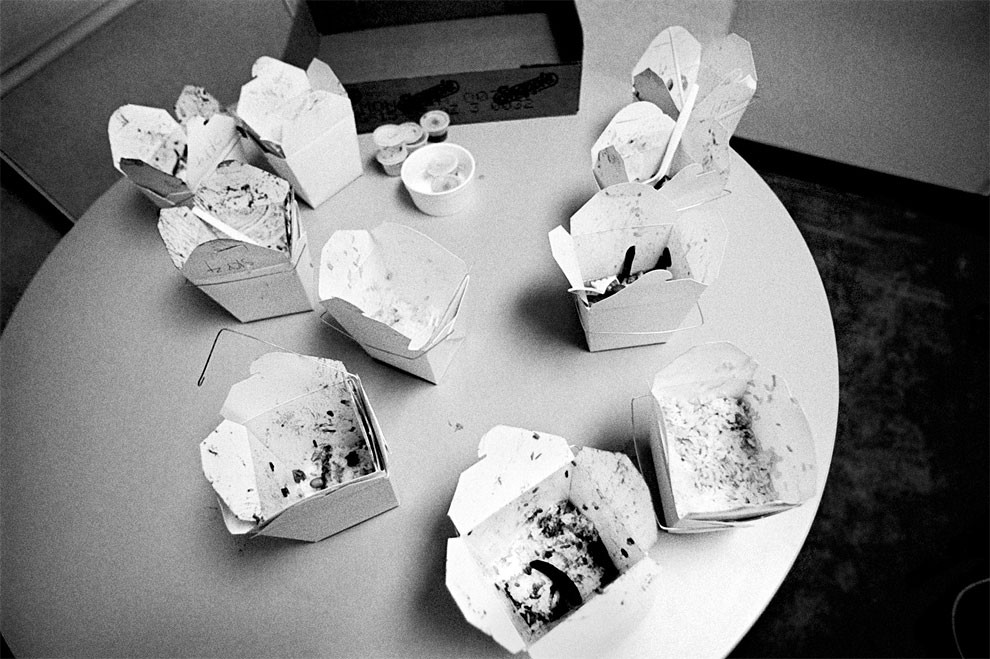
At the headquarters of NetObjects, morning finds empty Chinese food cartons left by engineers working all night to finish an important updated version of the company’s software. Other source material for programmers can include pizza, soda, and Ho Hos.